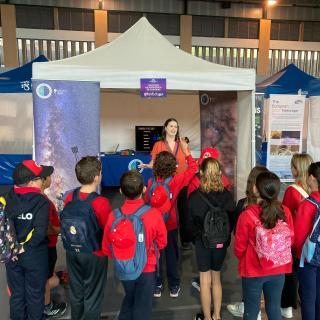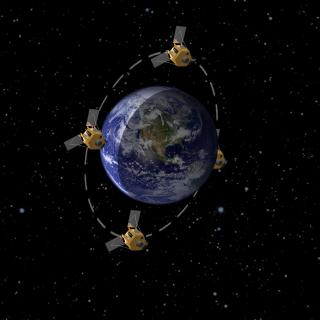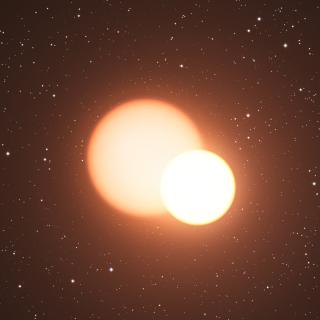A group of researchers, among them scientists from the IAC, has discovered one of the most distant and massive “hyperclusters” of galaxies so far known: the BOSS Great Wall (BGW). According to Heidi Lietzen, the principal investigator of this research, there is probably no other similar system so clearly isolated and with a comparable size.
As this astrophysicist explains “superclusters of galaxies are the largest structures in the universe, formed by groups of galaxies bound together by their gravitational interactions. These huge structures, with sizes between 10 and 50 megaparsecs, (30 to 150 million light years) can host thousands of galaxies.
Galaxies started to form in the early universe, in those regions where the density of matter was somewhat higher than average. Slowly, all the matter began joining itself together and moving towards the denser zones, where the superclusters formed after a long process. They are young structures compared with other systems such as normal galaxy clusters, because in order to group together into a single system millions of years were needed. In this way, the structure of the universe as a whole can be seen as the “cosmic web” predicted by Yakov Zeldovich, in which the material of the universe is organized within interconnected filaments around voids which have a much lower density.
The results of the study, published today in the journal Astronomy & Astrophysics have shown the presence of the BGW system, with a diameter of some 900 million light years. It is formed by two superclusters and two “walls” of galaxies, probably bigger in volume and diameter than any other known “hypercluster”. The structure as a whole contains some 830 galaxies, which make it one of the most massive “hyperclusters” known. The Sloan Great Wall, the most similar known “hypercluster” of galaxies, which is 160 Mpc long, has about half the mass of the BGW.
“To detect the BOSS Great Wall “hypercluster” measurements were made of 500,000 galaxies to reconstruct the space distribution of the luminous density. The BGW is clearly the biggest isolated structure in volume which has been studied in space”, commented José Alberto Rubiño, one of the other authors of the study. The sample was taken from the Sloan Digital Sky Survey (SDSS), a project which has mapped and catalogued the universe to study it in depth.
These enormous structures give us valuable information to compare with cosmological models. They can even challenge the numerical simulations which describe the formation and evolution of structures in the universe, because these simulations ought to be able to predict structures as big as this. The superclusters and “hyperclusters” are very useful for understanding how galaxies have evolved, because this evolution should be quicker in high density environments”. “Studying “hyperclusters” can give us clues about how to predict just when and how matter groups together, and offers new challenges to existing cosmological models” says Alina Streblynanska, an astrophysicist at the IAC.
Article: “Discovery of a massive supercluster system at z ~ 0.47”, by H. Lietzen (IAC-ULL), E. Tempel (Tartu Observatory), L. J. Liivamägi (Tartu Observatory), A. Montero-Dorta (The University of Utah), M. Einasto (Tartu Observatory), A. Streblyanska (IAC-ULL), C. Maraston (ICG-University of Portsmouth, J. A. Rubiño-Martín (IAC-ULL) y E. Saar (Tartu Observatory). Astronomy & Astrophysics Letters, Volume 588, L4. DOI: http://dx.doi.org/10.1051/0004-6361/201628261
Contact:
Heidi Lietzen: heidi.lietzen [at] gmail.com (heidi[dot]lietzen[at]gmail[dot]com) , 922605423
José Alberto Rubiño: jalberto [at] iac.es , 922605276
Alina Streblyabska: alina [at] iac.es, 922605746



